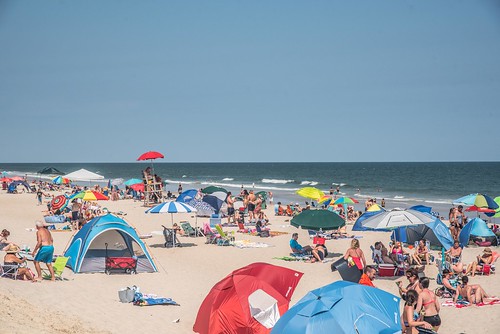 If you love Maryland’s Atlantic beaches, you’re not alone—eight million people visit Ocean City every year; that’s more people than the populations of Maryland and Washington, D.C. combined. But when large numbers of people visit the beaches on Assateague Island and Ocean City, it can present challenges for the wildlife that live there year-round. Here are a few easy tips to make your beach vacation as relaxing for wildlife as it is for you.
If you love Maryland’s Atlantic beaches, you’re not alone—eight million people visit Ocean City every year; that’s more people than the populations of Maryland and Washington, D.C. combined. But when large numbers of people visit the beaches on Assateague Island and Ocean City, it can present challenges for the wildlife that live there year-round. Here are a few easy tips to make your beach vacation as relaxing for wildlife as it is for you.Watch for nesting shorebirds. Peak beach season is also peak nesting season for shorebirds like the endangered piping plover. Their eggs are camouflaged to hide them from predators, but camouflage doesn’t protect them from accidentally getting stepped on. Stay watchful for nests, and if you see one, leave it alone.
Going fishing? Know your catch. Different species of fish have different minimum sizes, creel limits, and seasons. That’s because different populations of fish in different areas spawn at different times, and can vary in size. Following fishing regulations helps to keep fish populations stable for anglers today and in the future. Fishing regulations (and information on fishing licenses) can be found at dnr.maryland.gov.
Respect signs and fences. Some parts of the beach may be closed due to unsafe conditions or nests in the area. Following signs and staying on the right side of the fence keeps animals—and you—safe.
Keep your dog on a leash. Inquisitive dogs can disturb shorebird nests, which can sometimes cause shorebird parents to abandon their eggs and chicks and start a new nest somewhere else. Protect birds by keeping your dog on a leash.
Dispose of trash properly. Humans don’t think plastic bags look tasty, but to a sea turtle, plastic bags look like yummy jellyfish. Volunteers on Maryland shorelines removed more than 40,000 pounds of garbage in 2017, and you don’t want to make the problem worse. Throw your trash in proper receptacles, recycle what you can, and consider volunteering to pick up litter to make the beach a better place for everyone.
Doing these simple things can make your beach vacation better for you and wildlife.
dnr.maryland.gov/publiclands
Adam Larson is a Seasonal Park Ranger with the Maryland Park Service. Article appears in Vol. 24, No. 3 of the Maryland Natural Resource magazine, fall 2021.
